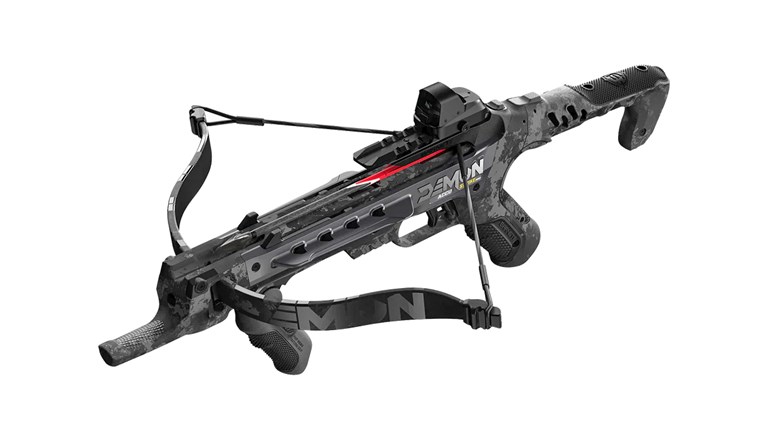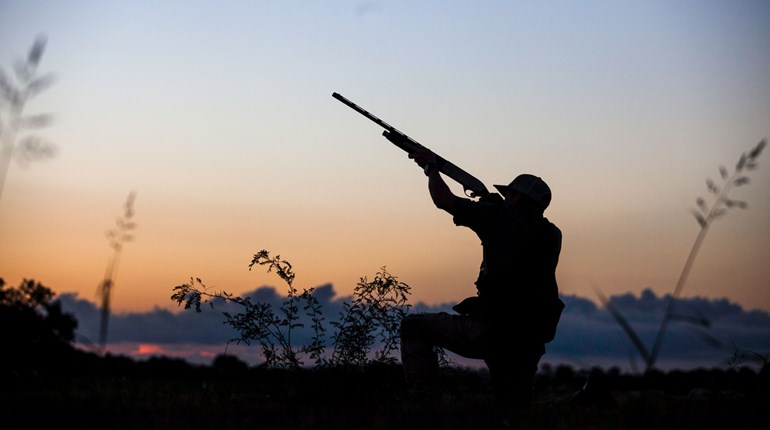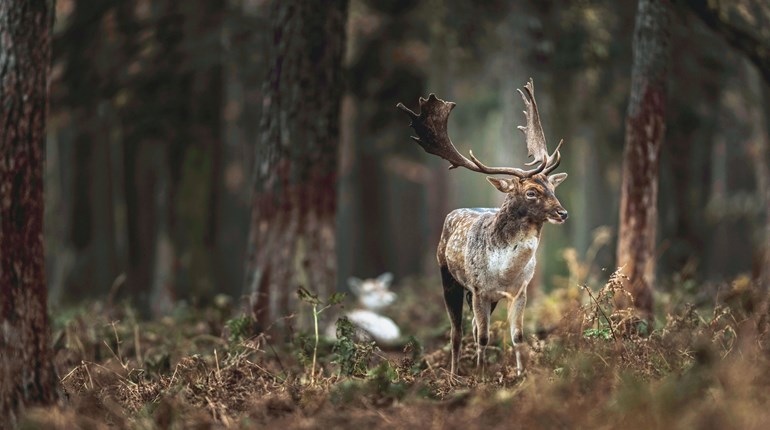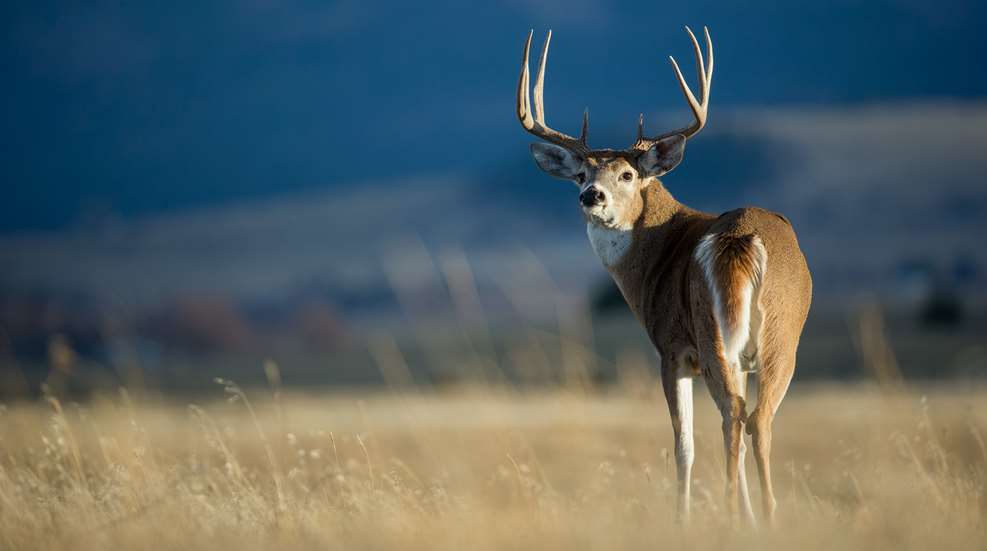
The arrow lay in the mud, plastic vanes tainted with blood. Deep, cloven hoofprints leaped across the field to the woods where morning snow was melting from the cedar boughs. There, finally, a splash of red to match the arrow. A wider spray of red 20 feet deeper into the woods. And then a steady drizzle leading to shiny wet antlers arcing above the ground cover. Beneath them lay the steaming gray pelage of my first arrow-killed buck in nearly two decades. And biggest.
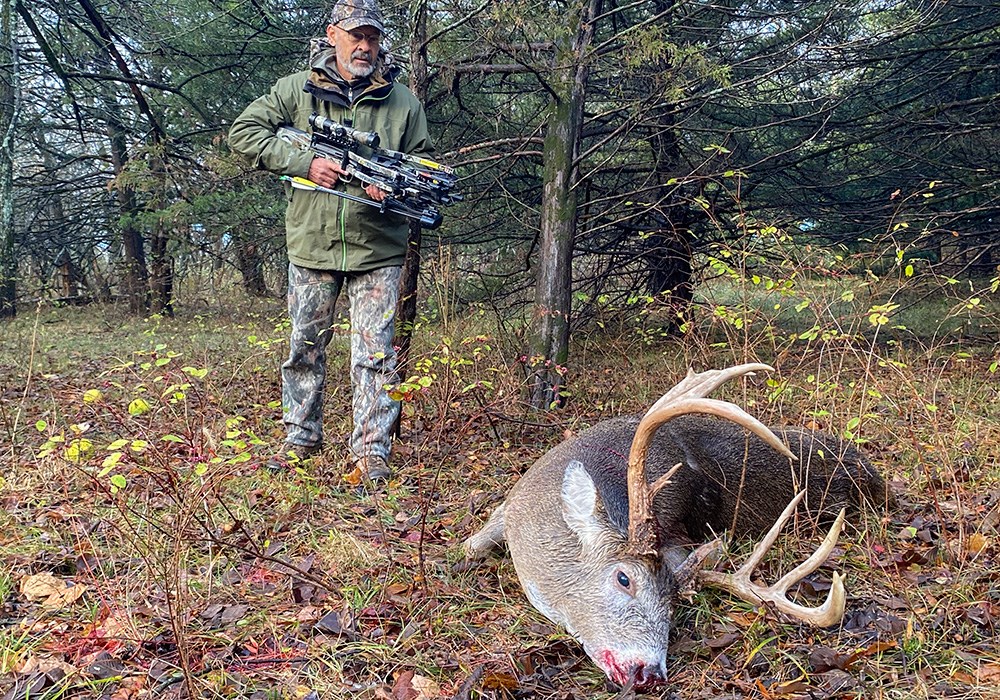
This hunt with Micah Collins of Big Kansas Whitetails had started 58 years ago at Boy Scout Camp on the banks of the Missouri in the tracks of the Lewis and Clark Expedition. There, under shady American elms, our troop leader introduced us to archery. Thereafter, the bow and arrow introduced me to an atavistic joy I never imagined I possessed.
■ ■ ■
The bend of the bow, the tension of the draw, the release of the energy. The flight of that arrow. Instant intoxication. All the romance of history, of archers from Genghis Khan to Robin Hood to the Cherokee, Iroquois and Sioux … it all coalesced around those sticks and string. From that moment on, my paper route earnings were fully committed to the purchase of a recurve bow.
The Shakespeare Necedah bow, a handful of cedar arrows and a half dozen Ben Pearson Dead Head broadheads became my license to adventure, a Schwinn my transportation to countryside cottontail coverts, then the ancient mysteries of Oak Hollow, an anomaly of eastern hardwood forest wending through mixed-grass prairie atop the glacial moraines of South Dakota’s Missouri Coteau. At 13 I was a duly licensed and legal deer hunter discovering primitive roots that ran deep.
Great horned owls landed on limbs at arm’s length, yellow eyes staring in shock when the big, feathered head swiveled 180 degrees. Chickadees perched on the bow’s tip. Coyotes pranced beneath my ash tree perch. White-tailed deer, probably the 10th and 11th I’d ever seen alive in my life, introduced me to white flags, pig-like rutting grunts, antler-rubbed saplings, odd, muddy scrapes on the ground and buck fever. Ruinous buck fever. When the first forkhorn strolled within 20 yards, I shook so hard that I launched my arrow almost vertically. Had I hit that buck the arrow would have entered a loin and exited the brisket.
Bow fever burned hot, year after year, until rotator cuff wear burned hotter. It had been a good 45-year run, but it was over. Until 2022 when I once again discovered bowhunting. With a crossbow.
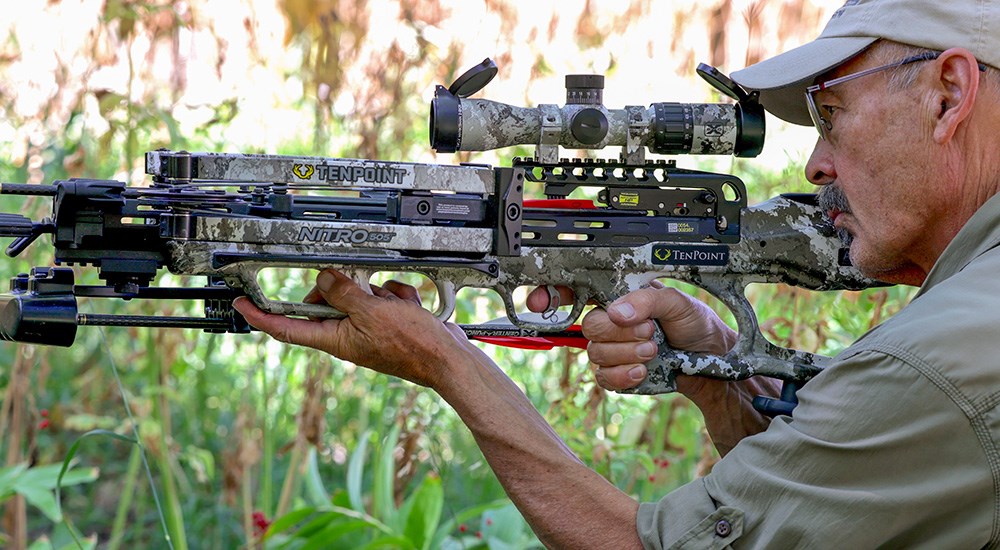 TenPoint calls its Nitro 505 “the fastest crossbow in the world.” The bow launches its 410-grain Pro Elite 400 carbon arrow at 505 fps.
TenPoint calls its Nitro 505 “the fastest crossbow in the world.” The bow launches its 410-grain Pro Elite 400 carbon arrow at 505 fps.
Crossbows, of course, have been anathema to “real” bowhunters for at least a century. You wouldn’t have caught a bowhunter dead with a crossbow in his hands in the 1970s—if such a tool were even legal in any state then. But the explosion of whitetails and the need to cull them freed fish-and-game agencies to loosen restrictions. Muzzleloader hunters were allowed to use in-line ignition, sabots, scopes, shotgun primers and even smokeless powder in some jurisdictions. In the mid-1970s someone put wheels on bows and the compound bow exploded onto the scene, tearing rifts in the bowhunting community that linger to this day. That eventually softened the blows directed at crossbows.
Simply put, crossbows are just another hunting tool, a hybrid you aim and shoot like a rifle, but a projectile with the limited range and slicing killing power of an arrow. If that gets me back in the hunt during the excitement of the rut, I’ll take it.
■ ■ ■
“I’ve seen this buck—he’s in that 160-class—working this field edge down toward the creek where I have a stand in a little food plot,” big Micah Collins explained as he chauffeured me in and around his eastern Kansas hunting grounds. “You can hunt out of the elevated box blind or sit against a tree, stalk. Whatever you like.”
“Appreciate that,” I replied. “As I’ve told you, I hate stands and I normally like finding a ground blind or jury rigging a few branches to make one, depending on the wind. But if this rain hits as bad as they’re predicting, well, I’m not too proud to sit in a box blind then.”
“Suit yourself, but you’ll likely get just once chance at this buck. You know they don’t grow 160 inches of antler by being young and stupid. But hey, we’ve got plenty of other stands, plenty of other good bucks.”
Before the tour was over, we’d seen two of them, thick-necked, beautifully antlered bucks I’d have been tickled to shoot.
The amiable, easy-going Micah manages Big Kansas Whitetails with his partner and bride, Abby, and probably his precocial 5-year-old son, Hank, who can engage adults in conversations about rubs, scrapes, antlers, licking branches and more. Abby does much the same while preparing killer meals and even deadlier desserts in the modern lodge kitchen. Micah didn’t earn the nickname Big Kansas without imbibing plenty of home cooking. Good meals, whitetails and deer hunting are obviously major family interests, and they’re shared fully with hunting guests.
While taking our familiarization tour, Micah and I hiked from the “backside” to the feed field I would ultimately hunt, but Micah didn’t seem overly concerned about spooking his resident bucks.
“I try to move through here often throughout the year so they’re used to the traffic. What with planting, weeding, maintaining the blinds, checking trail cams and just looking around, I’m part of the routine, part of their landscape. Like cars on the road, tractors in the field. There’s the blind.”
Blind? More like a deer hunter’s home away from home. The multi-sided box perched high atop a wheeled trailer. It overlooked not just a food plot but a corn feeder. I hate corn feeders.
“Yeah, I’m probably not hunting out of that thing,” I said.
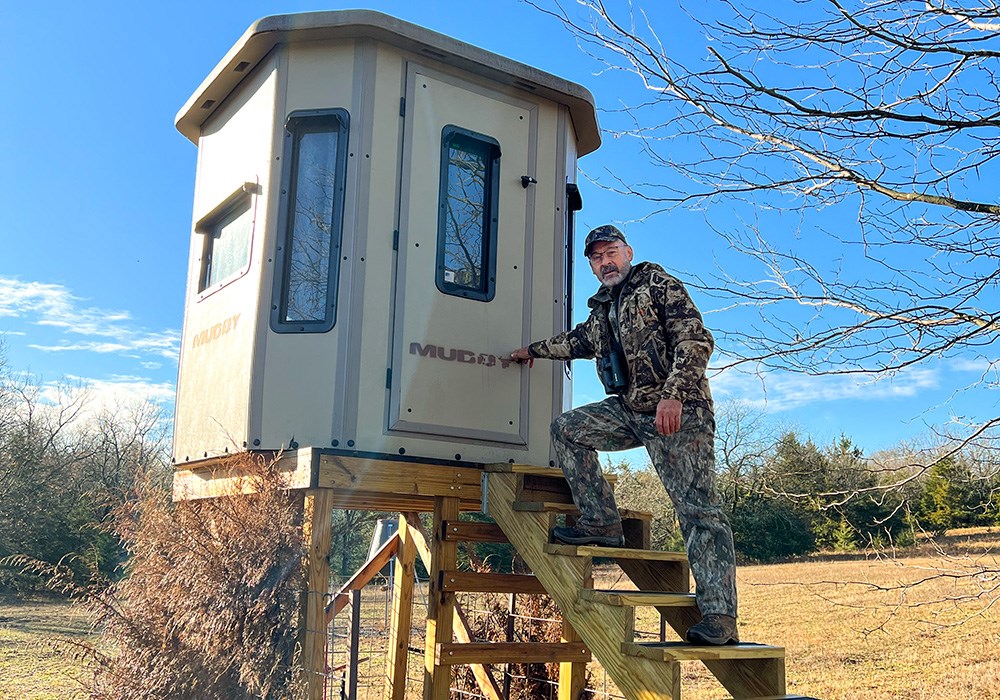 After 54 seasons, the author no longer finds sitting on wet ground under falling rain a wild adventure so much as penance. In Kansas he sat in the blind.
After 54 seasons, the author no longer finds sitting on wet ground under falling rain a wild adventure so much as penance. In Kansas he sat in the blind.
The next morning I was in it, listening to rain that soon turned into the hiss of snow. After 54 deer seasons, I no longer find sitting on wet ground under falling snow a wild adventure so much as an unnecessary penance. “I’ll just photograph from the blind until the weather clears,” I told myself. But then the deer appeared.
It was a doe at first, then a yearling buck, then a scrawny 6-point, finally a so-so 8 checking a scent rope/mock scrape Micah had arranged at wood’s edge. A dozen turkeys strode in for a long feed, trying to outcompete blue jays, fox squirrels and crows for the corn. I’m not a fan of corn feeders, but I’ve come to understand their application when every other hunter in the county is using them. “What’s the difference if you plant it and let it stand or pick it and dribble it out of a hopper?” another outfitter succinctly explained it years ago. “Hunt over a food plot, feeder, apple tree, oak—it’s all an ambush at a likely feeding site.”
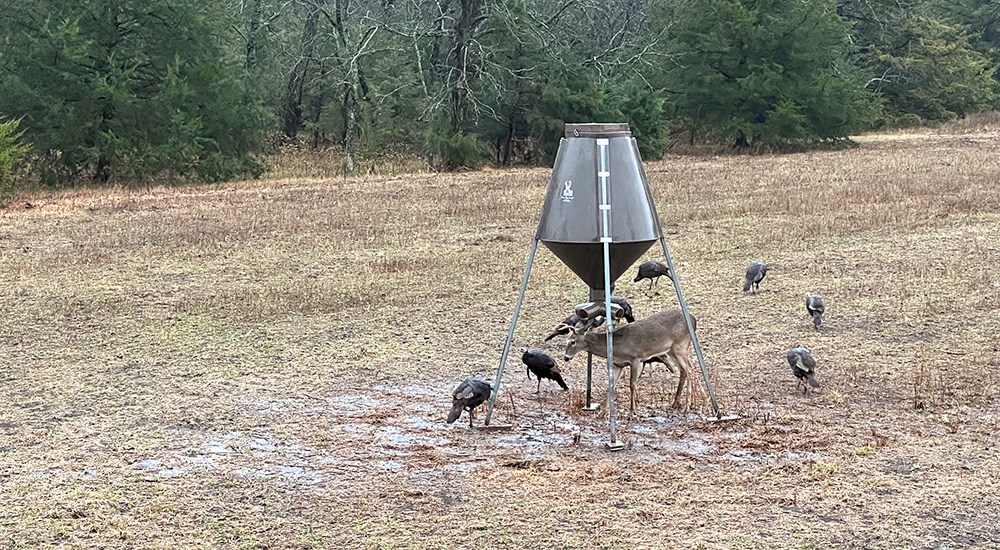
Point taken. But I still wasn’t going to waylay a buck at a corn feeder. The problem was I couldn’t leave the blind without spooking something. When the sky began to clear, I was trapped. “Soon as they drift off I’ll climb down and set up inside that tree line by that licking branch,” I told myself. And then the big antlers appeared.
He came off the eastern ridge, out of the woods where and when Micah had predicted. I recognized him immediately because we’d actually seen him in the headlights along the country road while driving in three hours earlier. “He typically runs a scrape line along that woods edge, checks some does in a little meadow to the northeast, then eventually–oh, about 9 or 10—comes off the hill on the east edge of your food plot,” Micah had elaborated. And now it was happening.
I had my camera on the tripod, shooting with the big telephoto through an open window, so I rolled some video as the buck approached. The dozen turkeys, a doe and fawn, and a yearling buck were active in the food plot. And here came the party crasher. Mr. Confident. Master of his universe. Caution to the wind. If the ladies and kids were eating—and all those turkeys with them—the coast must be clear.
The little buck cleared out to the left. Mr. Big then bum rushed the doe and fawn, chasing them hard right, off the food plot, and out of my life. Gone. Oh well, I wasn’t going to shoot a buck at a corn feeder from the window of an elevated box blind anyway.
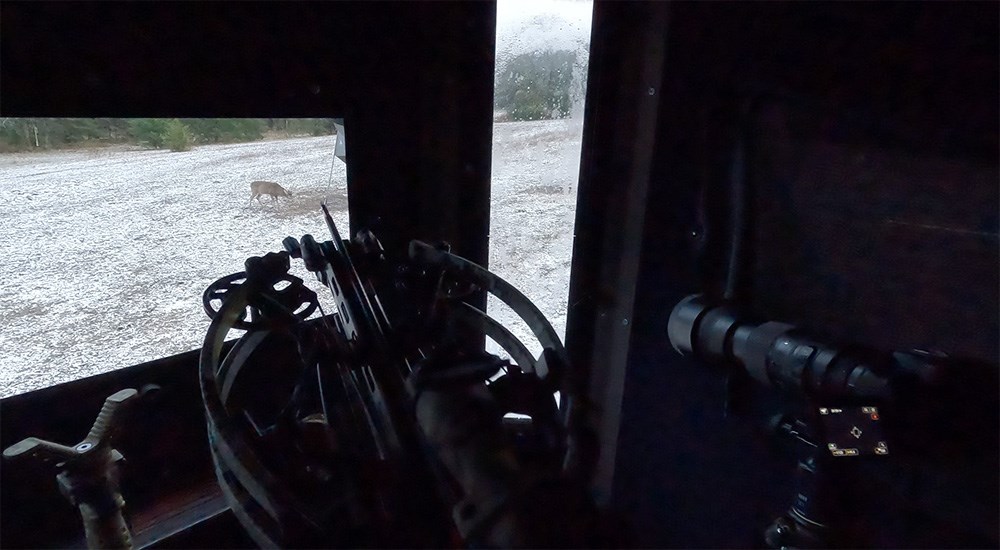
But then he came back. Same saunter. Same confidence. As incautious as the displaced yearling staring from the edge of the wood. I moved the camera to the side, raised and leveled the crossbow and positioned the scope reticle on the walking buck’s shoulder. “I’ll take him when he pauses.” But he didn’t pause. He turned 90 degrees toward the feeder. Just 20 yards away. Before he could crunch his first kernel, I fixed the 20-yard aiming point behind his shoulder and launched a bolt. He leapt, dashed beneath the feeder and pounded across the muddy field, tail down, hard hit.
When Micah and I trailed him an hour later, we didn’t find blood until we hit the trees about 100 yards out. Then there was blood. Splashes of it leading 20 more yards to the prize, a magnificent buck with antlers to spare. My first crossbow buck was ready for the skinning shed. But first, many moments of remembering and reflecting on the delights of bowhunting the rut.
I’ll admit it. Crossbow hunting isn’t bowhunting. But the intimacy of the hunt is the same. The scouting (even though Micah did all of it), the plotting, the planning, the waiting and watching. Squirrels still scamper and bury acorns. Raccoons still pad hump-backed along creeks. Turkeys scratch and peck. Sharp-shinned hawks chase juncos round the cedars. Nature in all her quiet intensity flowers around your stand. But when your buck comes in, you no longer pull against a bow that is suddenly twice the power you remember. Your shaking arms do not knock the arrow from the rest. Your shoulder does not hurt at the tug of the draw. Your crossbow limbs have already been cocked, their energy stored. All you need to do is aim, hold steady and release the trigger.
Sounds like deer hunting to me.
Meet the Crossbow
Why the crossbow languished in obscurity as a hunting tool for so many years after the resurgence of modern bowhunting in the early to mid-20th century remains a bit of a mystery. I suspect its lack of romance is much to blame.
Crossbows were likely invented by the Chinese some 2,500 years ago. By 100 B.C. they were utilized in Greek warfare, and by the medieval period in Europe they were a standard. Slower to load and fire than a long bow, but easier to master and shoot accurately. Not until firearms became reliable in roughly the 1500s did crossbow popularity begin to fade.
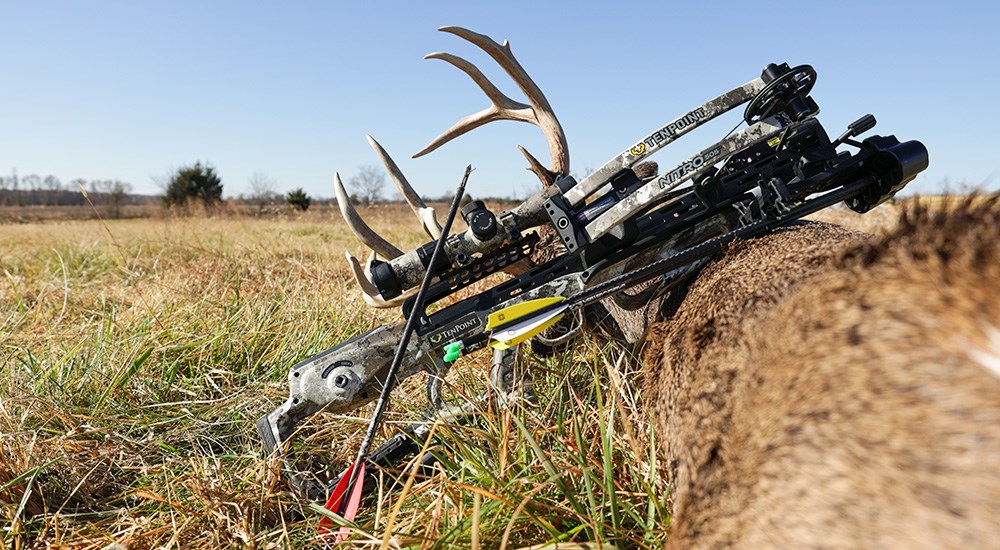
As a hunting tool the crossbow was, I suspect, less popular than the longbow because it was heavier and bulkier. Fine for sitting and waiting, less fine for hiking, still-hunting and stalking.
A crossbow is cheating only if you are employing it in a bow season not open to crossbow use. One can argue that a 65 percent let-off compound bow is equally cheating, but that is more widely accepted by the bowhunting world. Despite the advantage of the wheels and cams, a compound bow must still be manually pulled to full draw before being fired, and that seems to be the sticking point for most. No argument from me, folks. I’m not pretending to be an archer or even a bowhunter when I hunt with my Nitro 505. But I will admit to being a crossbow hunter. If a state or provincial game agency legalizes a deer, pronghorn, elk or bear season for crossbows and I obtain the necessary permits and tags, what’s the problem? We have primitive muzzleloader seasons, modern muzzleloader seasons, legal handgun hunting, straight-wall centerfire rifle cartridge-only hunting and—I’m guessing here—probably a legal spear hunting season in some places.
If crossbow hunting is legal in your favorite hunting zone and physical limitations prevent you from using a “real” bow, go for it. The hunt is more important than the tool.
TenPoint Nitro 505
Outfitter Micah Collins urged me toward the crossbow: “You’ll be able to hunt the peak of the rut here,” he said.
But a clunky crossbow? It has no soul. There isn’t the magic, the mystery, the Zen-like can’t-explain-it feel of a “real” bow. A crossbow is half bow, half rifle, neither fish nor fowl. Heavy and unbalanced. Ugly. But deadly. My old friend Brad Fenson had been extolling the virtues of the TenPoint Nitro 505 bow. So I borrowed one. “Just to get a feel for it. I’m not saying I’m going to hunt with it. But I’ll try it.”
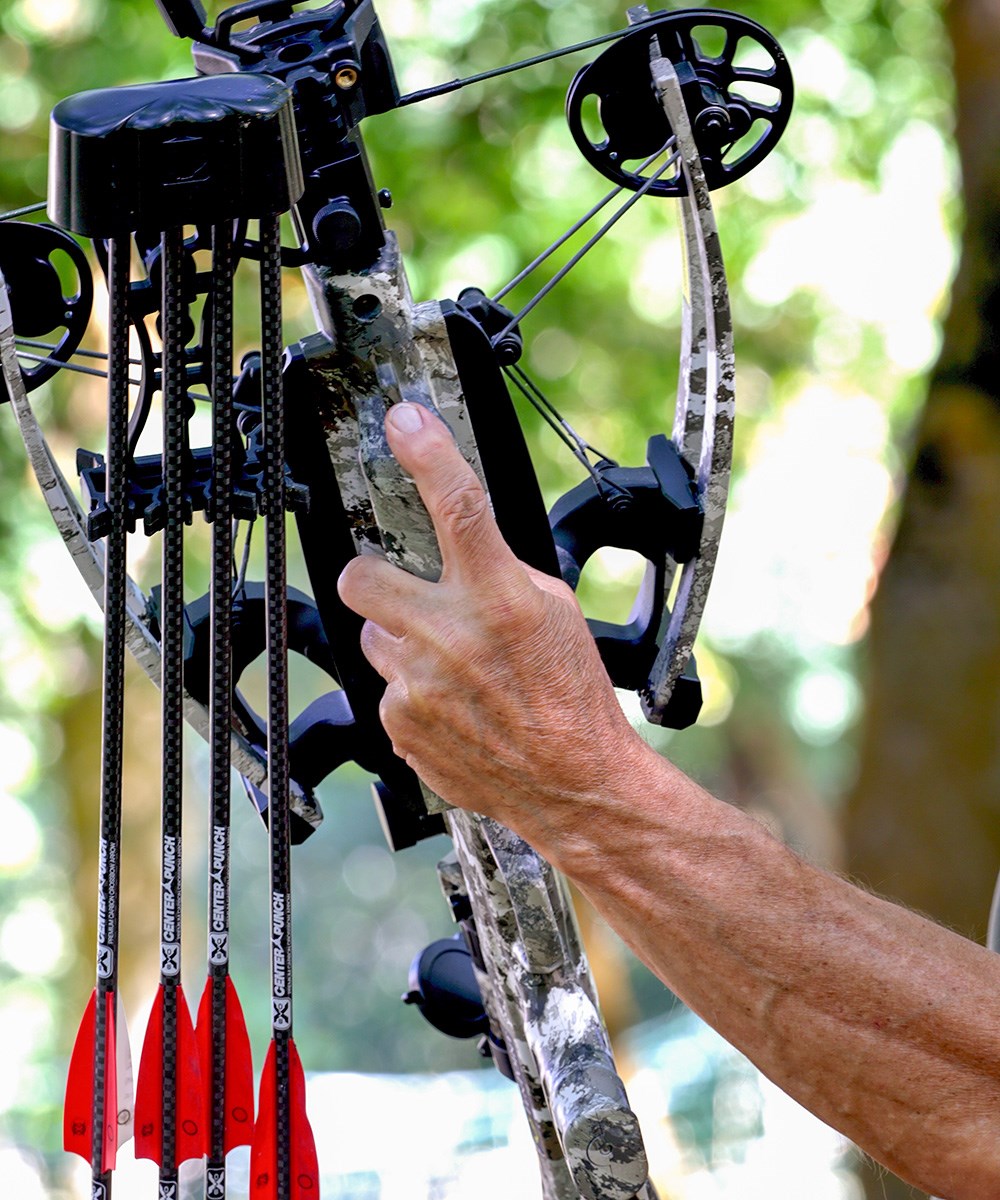
It scared me. I opened the box to expose not just limbs and stock but wheels and cables and levers and ramps and dire warnings to keep hands and fingers clear! Honestly, I felt safer handling my first .470 Nitro Express. But I read the cautions, read the instructions, waited several days and read them again. And then ventured to crank the contraption to full cock. Okay. That was easy. But now the device was cocked! It had a safety and trust me, I made doubly sure it was on.
Next came loading a bolt. Yeah, it’s a short arrow, but they want you to call it a bolt. I set it on a channel beneath the cocked, fully tensioned string! That’s the part that worried me. That’s why I double-checked the safety and kept my fingers near the end of the Evo-X CenterPunch carbon arrow, er, bolt, well beyond the stopping point of the string should it accidentally break lose.
Arrow knocked, I moved my forward hand under the fore-end stock, cheeked the comb, doubled-checked that all fleshy appendages were clear of any moving parts, aimed and pressed the trigger. The bolt slapped the target within 2 inches of my aim. From 20 yards. As did the next, next and next.
“This might just work,” I admitted to myself. And, as you can see, it did.
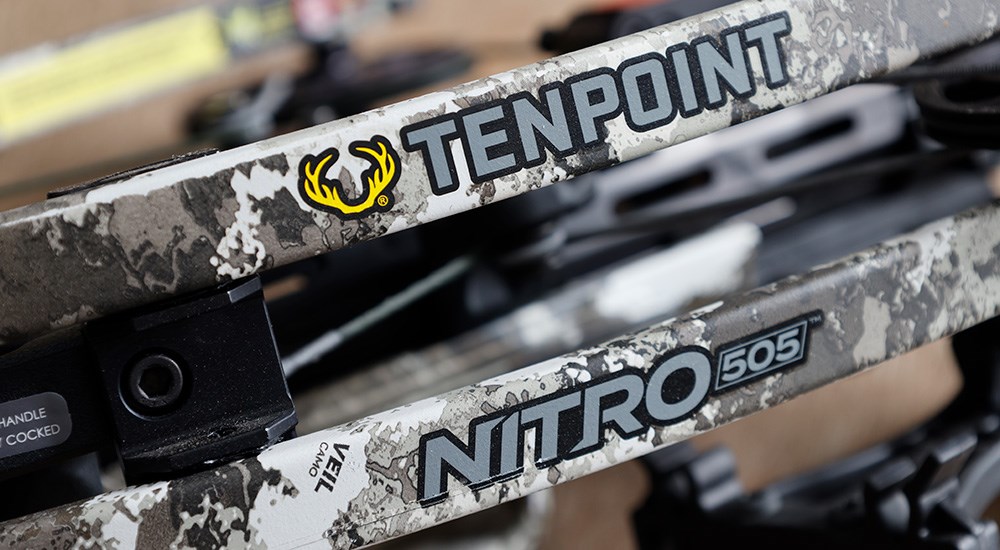
The TenPoint Nitro 505 comes with a scope rigged not only to match its trajectory, but with yardage aiming points down the vertical reticle. Once you balance the scope’s “power ring” to the arrow’s actual launch velocity (a chronograph makes this easy), you merely select the reticle matching the target distance. And it works.
Once I was drilling 1-inch groups at 20 yards, I tried 30, then 40, 50 and 60 yards. Each time, if I held the bow steady during the release, the bolts flew within an inch or two of my aim point. It was intoxicating. Some would say cheating, which strikes me odd. Few tell me I’m cheating when I shoot deer with an iron-sighted .30-30 or a scope-sighted 7mm Remington Magnum or even an overpowering .45-70.
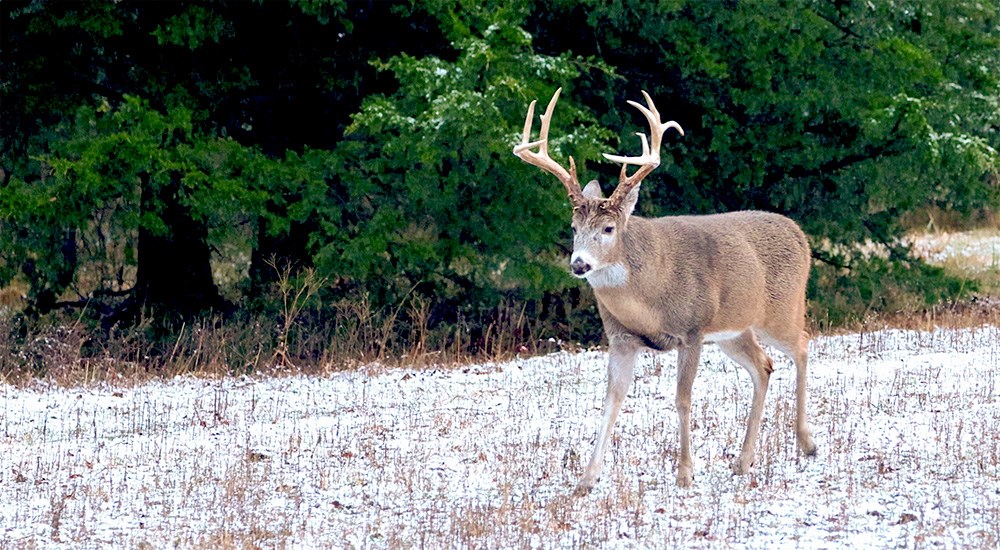
Big Kansas Whitetails
Kansas native Micah Collins is one of us, a kid so enamored of the outdoors, of hunting and fishing that he had little choice but to make it a job. And, with the help of his beautiful, warm and welcoming wife, Abby, he does it exceptionally well, actively managing multiple farms for wildlife production and quality animals. A mix of native hardwoods, pastures, croplands, ponds and creeks provides classic habitat not only for whitetails but for turkeys, ducks and geese, tree squirrels and cottontails, bobwhite quail, pheasants and even bass and crappies. For more information, visit bigkansaswhitetails.com.












